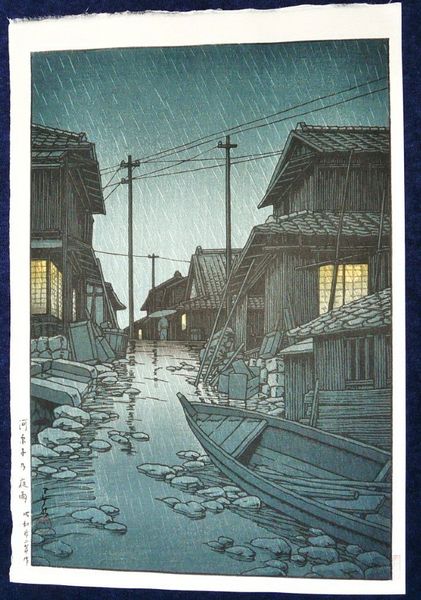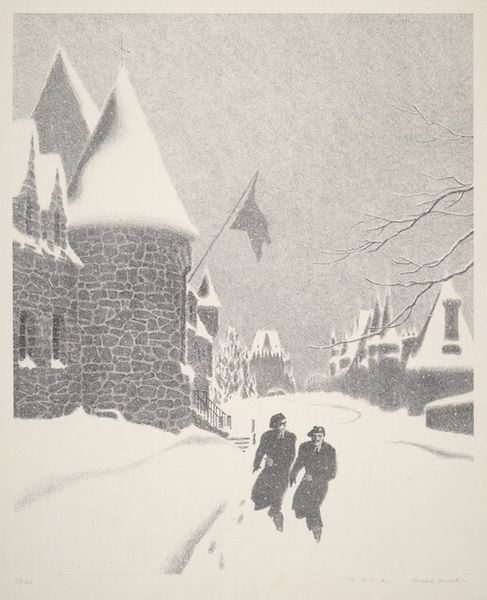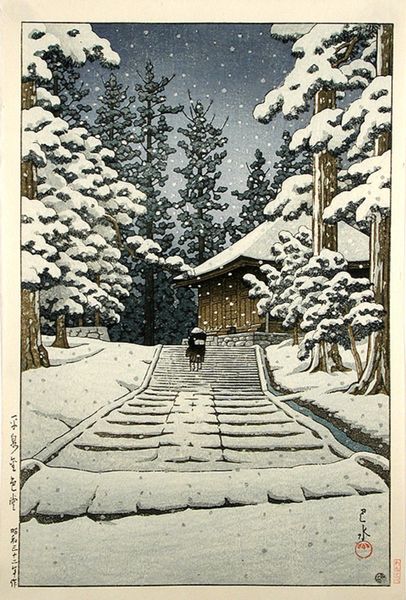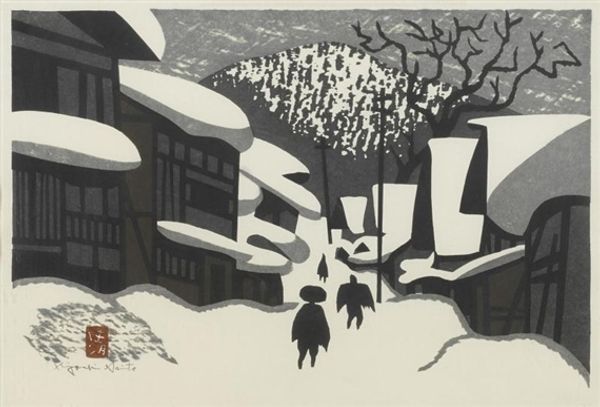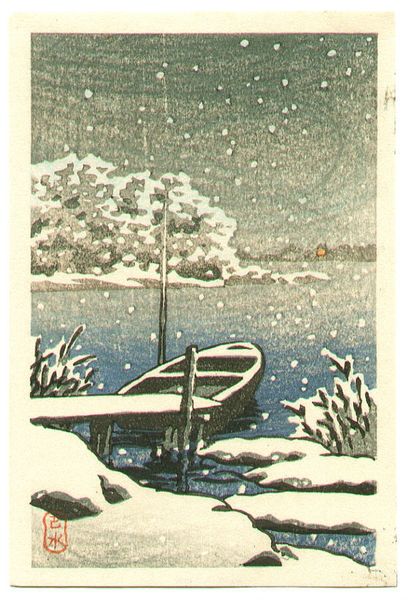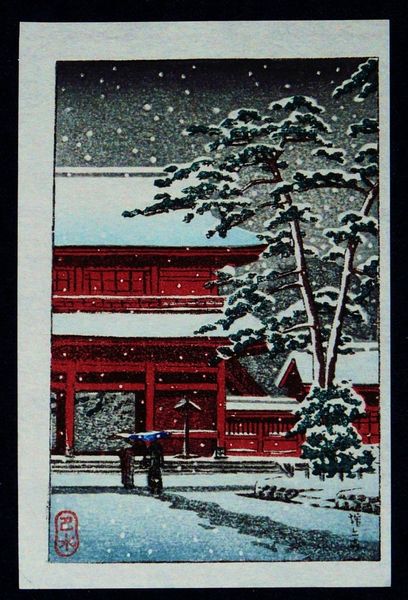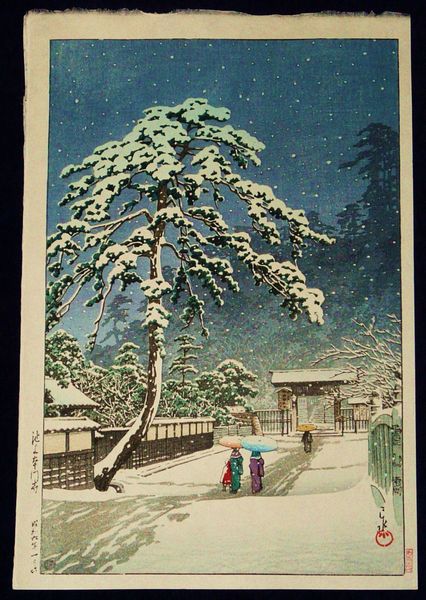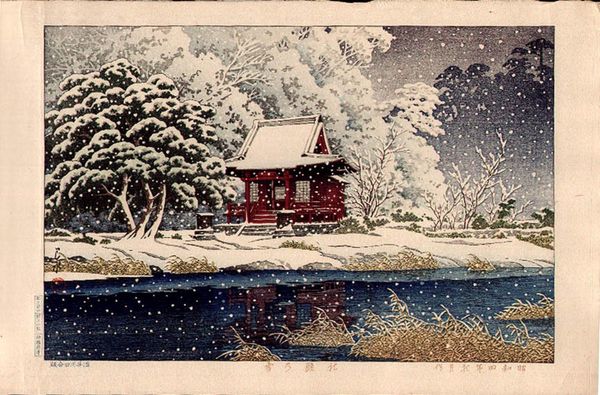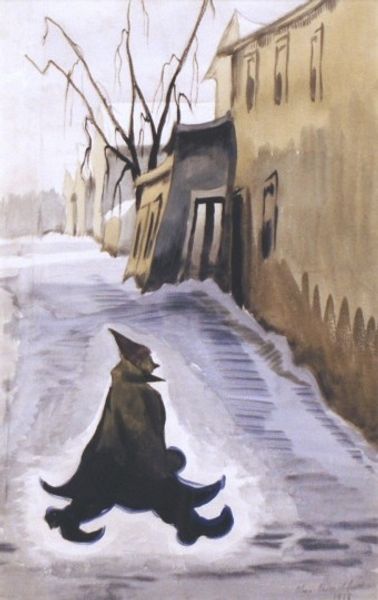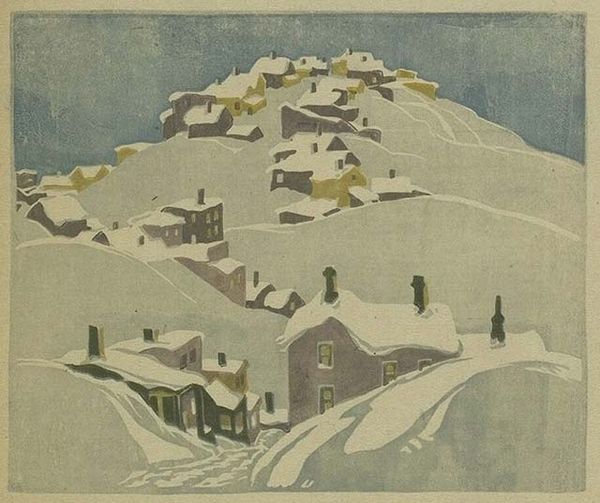
Copyright: Public domain Japan
Hasui Kawase created this woodblock print, "Show at Shinkawabata," sometime in the first half of the 20th century. It depicts a solitary figure walking with a dog through a snow-covered street in Japan. This image invites us to consider the cultural significance of place and the relationship between humans and their environment. Woodblock prints like this were popular souvenirs and ways to experience famous views, without making the journey. Consider the visual codes in play: the traditional Japanese architecture, the figure in traditional dress, and the serene, almost melancholic atmosphere. We might ask: what social conditions allowed for the production and consumption of such images? How did institutions like art schools and publishing houses shape artistic practice? What sources might we consult to understand the artist's intentions and the audience's reception? By examining these questions, we can gain a deeper understanding of the role of art in shaping cultural identity and social values.
Comments
No comments
Be the first to comment and join the conversation on the ultimate creative platform.

